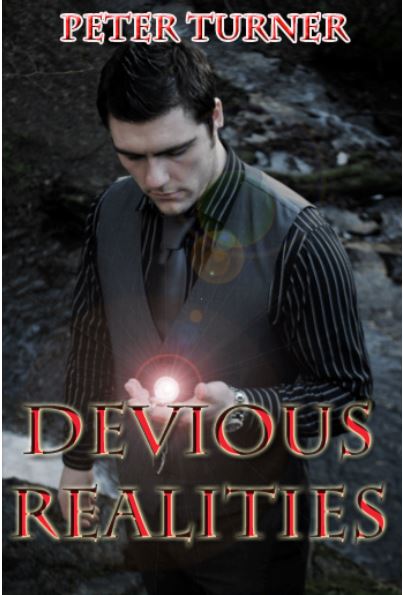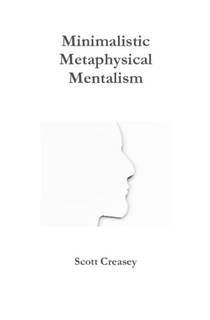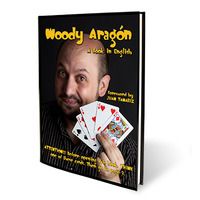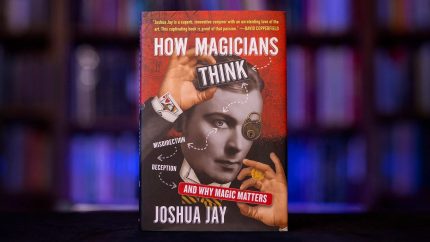Description
Devious Realities is the debut E-book for an up and comer in the mentalism world, Peter Turner. This is an excellent resource that should be of good value to experienced and well read mentalists and it should be of great value to intermediate mentalists, but it may be a bit over the heads of most beginning mentalists and performers who only “dabble” in mentalism. For me this book has been a real eye opener and I am very excited to perform this material as soon as I get this stuff practiced and well rehearsed. For that reason I’m giving this book Five Stars! *****
Using this review: This review will be long so I recommend skipping to the end and reading my overall thoughts. If that strikes a cord then you may want to come back and read about individual effects. Each effect description will be color coded based on my personal favorites. ( Red)as in red hot! This is an effect that has a clever method and delivers a powerful effect. The kind of effect that most people will find a place for in their show. (Orange) Hot. This is an effect that either has a really clever method or delivers a powerful effect but perhaps not both. Most performers will be able to use at least some part of this effect and tweak it to their liking without much trouble. (Green) (this was going to be yellow but you couldn’t read yellow) Warm. This is a good effect but neither the method or the presentation will likely “blow you away.” It will be an effect that some people will get a lot of use out of and others will not. Most people will “like” the effect but few people will “LOVE” the effect. (Purple) Neutral. This is an effect that some folks might like and some folks wont. It will all depend on individual styles. (Blue) Cold! This is an effect that I estimate most people will not like. It either delivers an unimpressive climax or the method used is convoluted or just plain bad.
Effects:
No Brainer Calculation: This is less of an effect than a method that can be used in several effects. It teaches you how to program, or rig, most scientific calculators sold in England and the US to be used as a trick calculator. The basic effect would be to have several different spectators input different numbers in the calculator and when all is added up the numbers equal a number predetermined by the mentalist. And NO he is not just hitting the memory recall button! This is a great little discovery and if you can find the right type of calculator it is very deceptive. The great thing about it is sparing the mentalist from spending huge amounts of money on gaffed calculators. If you are someone who ever thought of buying one of those gaffed calculators you may want to pick up this e-book first as it may save you hundreds of dollars!
Educated Guess, I Guess: This is an effect constructed using the “No Brainer Calculation Principle”. A jar full of different colored legos is placed on the table. A calculator is passed around the room as different spectators try to guess how many legos are in the jar. A judge (non-stooged audience member) adds up all the guesses and divides by the number of guesses. Once the number is announced the lid of the jar is unscrewed revealing a note that has the actual number of Legos in the Jar. The legos and the audiences prediction matches…or is “off by one” depending on your preference. There is certainly room to play with this presentation. For one, instead of adding up all the predictions and dividing by the number of predictions you could have each spectator call out their prediction of a specific color (i.e. Red) and then just add up all the predictions. You could also replace the legos with candy or some other object.
Unscientific calculation: This is a way of using a standard calculator (this one doesn’t require a scientific calculator) to get a peek of the total from a series of spectator chosen numbers. This one is intended to be used with a swami gimmick or other method of secret writing. Several spectators call out numbers and remember them. The numbers are plugged in the calculator but before they are totaled the performer clears out the screen. He can also show that the numbers are not in the memory recall feature. He then hands a spectator the calculator and has him/her total all the numbers and get the answer. The performer instantly reveals the correct prediction from a sealed envelope, or box, or other “secure” location. This one is basically a peek, not a force, but the advantage over the No Brainer Calculation is that virtually any calculator will work for it.
Multi Line Telepathy: This is more of a discussion of Ideas about how to use a multi-line style scientific calculator (the kind that types the equation out as you go) in performances. The two most clever ideas are first, a way of using the multi line in a similar way as the “Unscientific Calculation”, and second, a way of covering the screen with tape and have spectators punch in numbers randomly (without even looking) and when the tape is removed and the screen revealed you see that the sum totaled is the same as the prediction.
Thoughts on the Calculator STUFF!: First off Kenton Knepper chimes in a lot in this section of the book. I know that Kenton has done some previous work with calculators but I have not read any of that. So if you have that previous work I cannot really tell you how different this work is from that. Hopefully by reading the descriptions you will get an idea but if there is further questions just ask and I will try to answer shy of exposure. In general this is not my personal cup of tea….Yet! Right now the “add a number” routines I perform are more for small groups and deal with numbers under 100. Obviously calculator tricks are not recommended for numbers that small because there are many folks who can add numbers that size very quickly. So if that describes you then just stick to your swami and secret writing techniques. Now if you work with bigger numbers calculators can be an obvious choice both for the mentalist (in terms of methodology) and the audience (in terms of justifiability. If that is you then I strongly recommend this book for the calculator material alone. After a quick internet search the cheapest gimmicked calculator was Richard Osterland’s and it appears to be discontinued. Another one still on the market was going for over $1000.00! Even if one can be found for under $50.00 it is still a gimmick. With the material in this book you should be able to recreate most calculator effects with even a borrowed calculator if necessary. The beauty of this section of the book is that it gives you effect ideas with the three most common calculators you will find on the market, Standard everyday calculators, scientific calculators, and multi-line scientific calculators. So no matter what you come across you should be able to tweak your add a number calculator routines to fit the kind of calculator you have.
IPI (Instant Pseudo Induction): This is, as it says, a phony induction. Peter walks you through how he gives the appearance that he is inducing someone into a trance without having to go through the lengthy pre-induction and induction sequences. This can be very useful for a variety of effects, both effects he teaches in his book and others you may perform as well. The best part about this is speed. When you are performing a mentalism show, where you intend to use methods other than hypnosis to create a certain effect, actually going through the process of induction can take unwanted time and can even bore the audience if the end effect is merely using hypnosis as a catalyst for things to come. (let me be clear that I do not think Hypnosis is boring but when it is merely being used for a pseudo method or for an excuse to get a volunteer to close their eyes a drawn out induction can take focus away from the effect you are about to perform.) You won’t actually hypnotize most spectators but you will give the audience the appearance of it within 30 seconds or less. Some spectators may indeed drop into a trance, for those who actually practice hypnosis you probably know that there are some people who are extremely susceptible to suggestion and because of that there is a danger of someone slipping into an actual state of Hypnosis. Just on the off chance that something like that happens, Peter includes a script for waking someone out of hypnosis. For the majority of people that were not hypnotized by the IPI it will add some believability to the performance and for those who were you should wake them up just as would be done in a standard hypnosis performance. Overall this is nothing new, there are several performers I have seen do similar pseudo Inductions, but it is nice to get a methodology and script for it. I have seen many performers do pseudo inductions that look totally ridiculous and it is painfully obvious to the volunteer and the audience that no hypnotism occurred and that the effect is created using “other means.” For people who actually study hypnotism you will probably have your own ideas of how to do a pseudo induction but for others the IPI should give you a very useful tool that will improve your performances.
Drawing Out Personality: This is a drawing duplication in which the spectator is asked to think of an image that describes his personality. The mentalist asks a few personality questions in order to “get to know” how the spectator thinks and finally asks the spectator to name the image they were thinking of. The spectator says, “Boat” (or whatever) and the mentalist reveals that he has drawn a boat.
Thoughts: This effect requires a combination of a few methods both physical and psychological. It will require a bit of setup and you will have to be cognizant of your angles but essentially this is a simple effect to perform. The only issue with this effect is that it really isn’t meant to be performed on its own. It will work best to set up another effect. That, to me at least, is a bit of a disappointment because I think drawing dupes can be very powerful and it is somewhat of a shame to waste one on a “set-up” effect. However, this is the first of the effects by Peter Turner that give you a hint at his true genius. I don’t think I am exposing too much to say that some clever dual reality principles are in place in this effect. That alone makes this effect worth the study. I prefer to build up to a drawing duplication but if you prefer to use a drawing dupe to build up to other effects then this could be a real worker for you.
Geminus Cogito: This is basically a telephone trick but it really goes above and beyond. A spectator is given a pile of over 20 contact cards. On the front of each card is a name and on the back of each card is a phone number as well as a list of hobbies and interests. The spectator picks one of the cards and from the information provided on the back thinks of a card that they think might be appropriate for the person described on the contact card. The spectator is then encouraged to put their cell phone on speaker and call the subject on the contact card. The performer says hello and asks the subject to think of a card. They pick the same number the spectator picked for them.
Thoughts: This is the one that Kenton specifically singles out as an effect that fooled him. The effect itself requires a bit of setup. In addition to needing to write up all the cards it would certainly help if you have enough friends to fill the cards! Plus you will need to have friends that will be available on the phone at the approximate time the effect is performed. As such Peter specifically states that his primary use for the effect is for radio spots and other promotional situations. That being said he also offers a few options and ideas for how to adapt this for impromptu performances (when you cannot guarantee your friends will be available) or as an out if your friend is “out of service” at the time of the call. This one really deserves some study. It is a clever combination of several different methods each of which might spur your own ideas. One way or the other, I think most of you will take something away from the effect. Some might whine about the technicality that this effect requires the spectator to choose between one of your friends instead of one of their own. I personally think that is a very small point. I really feel that the lay audience, if asked about the effect later on, would really gloss over that detail. After all they can choose between up to 20 different acquaintances. Over all, this is a solid effect and will be especially useful for mentalists out there building their business with radio slots. Oh and did I mention that your pals are not stooges in this effect! They will share in this magical moment as well!
Overlooking the Obvious: Several spectators are brought up on stage. One is singled out and acts as the “sender.” The others act as “receivers” and each writes a few numbers down on a note. When the note is passed to the sending spectator and he/she is asked what is on the note he/she replies, “My phone Number!”
Thoughts: This is one that will most likely be discredited by most people reading this book but that would be a shame. Simply put the methods are so bold that many will fear an on stage debacle. Kenton adds some good words of advice for this effect and I plan on taking those to heart. Simply put, if you pay attention to the careful wording of this script and rehearse that script until you can deliver it flawlessly with your heart racing from the adrenaline of your performance, then this effect should absolutely work and absolutely play big. It is a bit beyond my Moxy at this point but I definitely plan on building up to this one because the overall effect should be a real crowd pleaser.
Mind Plant: Presentation 1: A spectator is put into a trance and told to think of an image. The performer draws an image. He then awakes the spectator from a trance and asks what the spectator was thinking. What the spectator was thinking and what the performer drew is one in the same!
Mind Plant: Presentation 2: One spectator is the sender, the other is the receiver. The sender is put in a trance and the receiver is blindfolded. While the sender thinks of a number the receiver makes a series of “remote viewing” style scribbles on the pad. When both are finished we find that within the receiver’s scribbles is a clearly visible number that matches the senders thought of number.
Thoughts: Let me see here…impromptu, requires no billets, switches, swamis, equivoque, imp pads, out to lunch set-ups, peeks, thumpers, or any other gimmick or gear. You need a pen and a pad of paper and that is only so you can show off your handy artwork as you display a picture depicting an image that the spectator only thought of. What’s not to like? These two routines, and the methods behind them, are, in my opinion, worth the price of this book! When you see the method and grasp the potential of it you will be overjoyed! The two effects taught are simply the tip of the iceberg for this method. Best yet, if performed well you really don’t need to be that bold or consider this that risky. This really encapsulates the theme of this book because this one is darn Devious!
Chain Game: The performer invites several spectators up on stage and hands the last one an envelope. He then starts a game of free association. Each spectator down the line yells out the first word that pops in their head. The last spectator says “dry” and then opens the envelope. It too says “Dry.”
Thoughts: This effect will require some set up or the use of a principle that most intermediate mentalists should at least be aware of. It is also not 100%. Poor spectator selection could cause problems but Peter gives scripting and outs for just about anything that could go wrong with this effect. When I read this I felt that this would be an excellent “last phase” of a mental prediction epic. Indeed, given the excellent scripting he offers, you could actually build an entire Mental Epic routine around this effect. So on its own I think it is a good effect but combined in a larger effect you could use this method to build up to one of your climax effects.
At the Heart of Destiny: The performer invites a couple on stage (married or dating) and asks them their names. He jots their names down on a post it and sticks it on the outside of a paper bag. He asks the woman to reach inside and pull out a rose. He then asks the man to reach inside and pull out a paper heart. On the paper heart the couple’s initials are written like an old style valentine card, i.e. “BT+DS.”
Thoughts: While not an opener or a closer there certainly is a place for this effect in some peoples act. If you have a moment for a sentimental effect then this would fit the bill. It could also serve to smooth things over after performing an effect that “teases” a couple, such as Alvo Stockman’s Battle Of The Sexes. Not the strongest effect in this book but it does teach a clever move of Andy Neiman’s and that might inspire some thought.
A Gift From Me to You: The performer riffles through a pack and has a spectator pick a card. Without peeking the card he them proceeds to divine the number and suit of the card. He claims that he does this by reading “tells.” To prove this he invites another spectator on stage and teaches that spectator,”the system.” The spectator then divines the number and suit of a card selected by the other spectator.
Thoughts: In this effect Peter teaches two interesting card moves, both slight modifications to sleights you probably already know, and a nice methodology to get one spectator to read the “tells” of another. It all combines into a very nice routine that will convince your spectators that you could be the master of any casino. I have heard Luke Jermay talk on a few occasions about how to do gambling themed mentalism and this sort of effect would work perfectly for that sort of a routine. Add to that the fact that this is already a two phase effect and, if your follow the rule of threes, you are already two thirds of the way towards a “Mental Gambling Demo.”













